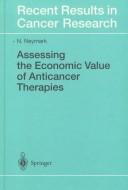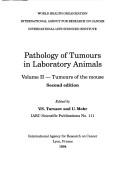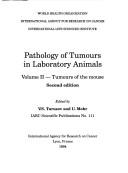| Listing 1 - 10 of 11 | << page >> |
Sort by
|

ISBN: 3506717596 3657717595 Year: 2010 Publisher: Paderborn : Ferdinand Schöningh,
Abstract | Keywords | Export | Availability | Bookmark
 Loading...
Loading...Choose an application
- Reference Manager
- EndNote
- RefWorks (Direct export to RefWorks)
Was ist Krebs? Warum gerade ich? Warum gerade jetzt? Was hat das zu bedeuten? Krebs als Zeiterscheinung? Häufig gestellte Fragen, immer wieder Bücher zu diesem Thema. Es scheint alles gesagt zu sein. Und doch fehlt ein Zugang, der das Phänomen Krebs bis zu den letzten Dimensionen des Seins hin durchreflektiert, die Paradigmenwechsel von Physik und Biologie aufgreift und sie mit den neuesten Erkenntnissen von Genetik und Psychoneuroimmunologie zusammendenkt. Die naturwissenschaftliche Perspektive allein genügt nicht. Wegen ihrer Komplexität sind Krebserkrankungen nur dann in ihrer ganzen Tiefe zu „verstehen“, wenn man sich ihnen mit naturwissenschaftlichem und geisteswissenschaftlichen Zugängen nähert. Das bedeutet konkret, Erkenntnisse der naturwissenschaftlichen Medizin und Psychoonkologie aufzugreifen und sie mit geisteswissenschaftlichen Aspekten von Philosophie und Theologie zusammenzudenken. Matthias Beck, Arzt und Theologie, ist wie kaum ein anderer dazu berufen, sich in diesem Themenkomplex zu Wort zu melden. Sein neues Buch führt die Ansätze weiter, die in seinen vorherigen Büchern „Seele und Krankheit“ und „Hippokrates am Scheideweg“ bereits angeklungen sind. Matthias Beck lehrt am Institut für Ethik und Recht in der Medizin an der Universität Wien. Der letzte Weltkrebsbericht zeigt, dass die Zahl der Krebserkrankten weltweit wächst – von derzeit 10 Millionen auf 15 Millionen. Andererseits stoßen die Gesundheitssysteme – gerade auch in den Industriestaaten – an ihre finanziellen Grenzen. Der einzelne muss mehr Verantwortung für seine Gesundheit und Krankheitsbewältigung übernehmen. Dies kann er aber nur, wenn er versteht, wie derartige Krankheiten entstehen, was die tieferen Hintergründe sind, welche Mechanismen eine Rolle spielen und wie er an seiner Heilung mitwirken kann. Zu diesem Wissen will das vorliegende Buch beitragen. Es stellt den Mensch als ganzheitliches Wesen in den Mittelpunkt, geht von seiner Geistbegabtheit aus, die ihn befähigt, über den Sinn seines Lebens, über den Tod, über Zeit und Ewigkeit und über Schicksal und Gott nachzudenken. Nur von der Analyse des menschlichen Wesens aus kann ein Phänomen wie jenes der entarteten Zellen erfasst werden. Erst von Ganzen aus kann Messbares und Nichtmessbares, Sichtbares und Unsichtbares, Materie und Geist, Seele und Leib in ihrem Zueinander verstanden werden. Krebserkrankungen finden erst von hier aus ihre tiefste Interpretation.
Medicine [Psychosomatic ] --- Man (Christian theology) --- Cancer --- Medicine --- Health Workforce --- Patients --- Religious life. --- Religious aspects. --- Tumors --- Neoplasms --- Tumours --- Pathology --- Cysts (Pathology) --- Oncology --- Psychology.
Book
ISBN: 903341676X Year: 1987 Publisher: Leuven Amersfoort Acco
Abstract | Keywords | Export | Availability | Bookmark
 Loading...
Loading...Choose an application
- Reference Manager
- EndNote
- RefWorks (Direct export to RefWorks)
Antenatal diagnosis --- Diagnostic anténatal --- Diagnostic intra-utérin --- Diagnostic intrautérin --- Diagnostic prénatal --- Diagnostics prénatals --- Diagnostics prénataux --- Dépistage prénatal --- Erfelijkheidsleer --- Foetus--Maladies--Diagnostic --- Foetus--Maladies--Dépistage --- Hérédité --- Intrauterine diagnosis --- Neurologie --- Prenatal diagnosis --- Prenatal testing --- Prenatale diagnose --- Neural Tube Defects. --- #GBIB:CBMER --- #GGSB: Bio-ethiek --- #GGSB: Geboorteregeling --- Academic collection --- Acrania --- Developmental Neural Tube Defects --- Iniencephaly --- Neural Tube Developmental Defects --- Neuroenteric Cyst --- Occult Spinal Dysraphism --- Occult Spinal Dysraphism Sequence --- Tethered Spinal Cord Syndrome --- Craniorachischisis --- Developmental Defects, Neural Tube --- Diastematomyelia --- Exencephaly --- Neurenteric Cyst --- Spinal Cord Myelodysplasia --- Tethered Cord Syndrome --- Acranias --- Craniorachischises --- Cyst, Neurenteric --- Cyst, Neuroenteric --- Cysts, Neurenteric --- Cysts, Neuroenteric --- Defect, Neural Tube --- Defects, Neural Tube --- Diastematomyelias --- Dysraphism, Occult Spinal --- Dysraphisms, Occult Spinal --- Exencephalies --- Iniencephalies --- Myelodysplasia, Spinal Cord --- Myelodysplasias, Spinal Cord --- Neural Tube Defect --- Neurenteric Cysts --- Neuroenteric Cysts --- Occult Spinal Dysraphisms --- Spinal Cord Myelodysplasias --- Spinal Dysraphism, Occult --- Spinal Dysraphisms, Occult --- Tethered Cord Syndromes --- Neural tube --- Diseases and defects --- Fetus --- Abnormalities --- Genetic aspects --- Neural Tube Defects --- Bio-ethiek --- Geboorteregeling
Book
ISBN: 0897665856 Year: 1990 Volume: 586 Publisher: New York, NY : New York Academy of Sciences,
Abstract | Keywords | Export | Availability | Bookmark
 Loading...
Loading...Choose an application
- Reference Manager
- EndNote
- RefWorks (Direct export to RefWorks)
Breast --- Cancer --- Risk factors --- Congresses --- Cysts --- Physiology [Pathological ] --- Fibrocystic disease --- Precancerous conditions --- Breast neoplasms --- Etiology --- Metabolism --- Risk --- BREAST NEOPLASMS --- FIBROCYSTIC DISEASE OF BREAST --- PRECANCEROUS CONDITIONS --- RISK --- ETIOLOGY --- CONGRESSES --- METABOLISM
Book
ISBN: 928322132X Year: 1995 Publisher: Lyon : I.A.R.C. (International agency for research on cancer),
Abstract | Keywords | Export | Availability | Bookmark
 Loading...
Loading...Choose an application
- Reference Manager
- EndNote
- RefWorks (Direct export to RefWorks)
Cancer --- -Cancers --- Carcinoma --- Malignancy (Cancer) --- Malignant tumors --- Tumors --- Mortality --- mortality --- Neoplasms --- Survival Rate --- Cancers --- NEOPLASMS --- MORTALITY --- STATISTICS --- CANCER --- EPIDEMIOLOGY --- Monograph --- Tumors. --- Mortality. --- Statistics. --- Cancer. --- Epidemiology. --- Diseases --- Public health --- Statistical analysis --- Statistical data --- Statistical methods --- Statistical science --- Mathematics --- Econometrics --- Mortality, Law of --- Death --- Demography --- Death (Biology) --- Tumours --- Pathology --- Cysts (Pathology) --- Oncology --- SURVIVAL RATE --- WORLD HEALTH ORGANIZATION --- EUROPE
Book
ISSN: 10171606 ISBN: 9789283212997 Year: 2010 Publisher: Lyon IARC Press
Abstract | Keywords | Export | Availability | Bookmark
 Loading...
Loading...Choose an application
- Reference Manager
- EndNote
- RefWorks (Direct export to RefWorks)
Barbering --- Carcinogens --- Hair dyes --- Amines --- Occupational Exposure --- Amines in the body --- Benzidine --- Diaminodiphenylmethane --- Tumors --- Neoplasms --- Tumours --- Pathology --- Cysts (Pathology) --- Oncology --- Bisaminophenylmethane --- Dianilinomethane --- Diphenylmethanediamine --- Methylenebisaniline --- Methylenedianiline --- Aniline --- Methane --- Bianiline --- Biphenyl-diamine --- Diamino-biphenyl --- Diaminobiphenyl --- Diphenylenediamine --- Fast Corinth Base B (Trademark) --- Aromatic amines --- Body composition --- Carcinogenicity

ISSN: 00800015 ISBN: 3540640304 3642721257 3642721230 9783540640301 Year: 1998 Volume: 148 Publisher: New York ; Berlin ; Tokyo Springer
Abstract | Keywords | Export | Availability | Bookmark
 Loading...
Loading...Choose an application
- Reference Manager
- EndNote
- RefWorks (Direct export to RefWorks)
BOOK REVIEW Kevin B. Knopf, JNCI, 1999, 91(14), 1248-1249The need for accurate economic analysis to guide health care delivery is irrefutable, since health care costs continue to rise in parallel with a growing demand in value for our spending. Cancer care accounts for 5%-10% of all health care dollars spent in the United States, and although breakthroughs in cancer research will provide much needed improvements in the treatment of cancer, they will also come at a cost. Dr. Neymark speaks in his preface of the "aura of sanctity" surrounding cancer so that "everything possible" is done for the patients. This aura derives partly from the seriousness of the disease and the fear surrounding a diagnosis of cancer. However, a need for high-quality economic research in cancer care is still necessary to guide rational resource allocation, and this text succeeds in succinctly and thoughtfully summarizing the state of the art of economic analysis of cancer therapies. By exploring the literature related to economic evaluation of cancer therapies over a 10-year period, Dr. Neymark has provided a great deal of food for thought for research in this area. The general nature of economic evaluation is defined in the introduction: "Economic evaluation is a widely applicable economic method concerned with the comparison of two or more alternatives with respect to both their positive and negative impacts or benefits and costs, respectively, as these impacts are generally termed. It is the presence of alternative methods of treatments that create an economic problem." It is the presence of choices that makes economic evaluation a valuable tool. In the past, the treatment of cancer, particularly metastatic disease, was limited in the number of options available, as the author notes. However, new treatments are continually being developed, which come with a cost versus benefit trade-off, and thus economic evaluations will assume a greater importance as our therapeutic choices increase. The very brief chapter on the epidemiology of cancer could have been made more substantial, and the addition of graphs to interpret trends would have been useful. The following chapter provides an excellent overview of the nature of cancer and its major treatment modalities, which will be of interest to the nonclinician. The chapters on economic evaluation and the economic burden of cancer are well written and serve as solid introductions for the novice to these areas and a good review for others. He describes the rationale and methods behind the cost-of-illness studies, which he treats with a healthy skepticism. A lengthy section on economic evaluation covers important concepts and describes, in turn, the four major types of studies: cost-minimization, cost-benefit, cost-effectiveness, and cost-utility, the latter two being the most appropriate type of study for most cancer therapeutics. Discussion about methodology involved in collecting data for cost and outcomes, perspective of the analysis, valuation, and presentation and interpretation of results of economic evaluations are also well written. The heart of the text is a thorough discussion of the major economic studies of cancer treatment published from 1985 to 1996. The author reviews the relevant literature pertaining to costs and treatment of most of the major malignancies, including relevant supportive care areas. Topics covered include the following: breast cancer (14 studies), lung cancers (eight studies), colorectal cancer (eight studies), prostate cancer (10 studies), genitourinary and gynecologic malignancies (11 studies), leukemias and lymphomas (10 studies), therapies for emesis and infections (nine studies), hematologic support and transplantation (18 studies), and palliative care (five studies). Every section is preceded by an overview of treatment options that are fairly accuratealthough not without occasional omissions and errors; these sections will be invaluable for the nonclinician. Each study is described concisely, including rationale, type of analysis, perspective, techniques, data sources, and results, when stated by the original authors. Dr. Neymark justly criticizes studies with conceptual or methodologic flaws, erroneous assumptions, or clear oversights in the evaluation, and as a critical reviewer, he certainly holds no punches. This lengthy and in-depth review of a body of work makes his text a compelling read and enables the reader to gain a great deal of insight into how to, and often how not to, evaluate the economics of cancer therapeutics. Through reading his summation of the body of literature, one obtains an appreciation of not only what studies have been performed and which studies should be performed but also a sense of the "state of the art of the methodology" currently in use. Each chapter closes with a concise table of the articles reviewed and concluding comments that highlight the strengths and weaknesses in the studies, comparing studies when appropriate, and pointing out possible future directions. A concluding chapter discusses some of the broader controversies, which have been hinted at throughout the review, in an insightful manner. The use of "league tables" to compare cost-effectiveness ratios is justly criticized, due to the implicit assumption of comparability of studies. The issue of costs versus charges is briefly discussed, and a lengthy discussion of the merits of collecting economic data in clinical trials points to the complementary benefit of modeling. The nature of outcomes used, e.g., the inapplicability of life-years saved as an outcome to evaluate antiemetic therapies, is also explored. By design, this review cannot serve as a complete "how to" guide for economic evaluations, although there are many pearls to be gained from a thorough reading. The economics of cancer prevention and screening, which are in many ways more difficult to study from an economic perspective, were not explored in this text, but there are other sources for this information. Many of the reviewed studies are excellent and may serve as an aide to treatment choices for a specific situation. In a broader sense, this book will be extremely valuable for both the health service researcher who wishes to learn about cancer economics and the cancer researcher interested in the economic aspects of their field. By reviewing 9 years of the literature in a systematic, thoughtful, and critical manner, there is much to be gained for the interested reader who invests a small amount of time reading this excellent work.
Cost of medical care --- Coût des soins médicaux --- Geneeskundige zorgen--Kosten --- Health care costs --- Kosten van de geneeskundige zorgen --- Medical care [Cost of ] --- Medical care--Cost --- Medical service [Cost of ] --- Medicine--Cost of medical care --- Medische zorgen--Kosten --- Soins médicaux--Coût --- Cancer --- Medical care, Cost of --- Neoplasms --- Cost-Benefit Analysis --- Health Care Costs --- Treatment --- Economic aspects --- Cost effectiveness --- therapy --- methods --- economics --- Oncology . --- Oncology. --- Tumors --- QZ 266 Neoplasms. Cysts -- Therapy --- Economic Evaluation --- Costs and Cost Analysis --- Antineoplastic Agents
Book
ISBN: 9052402582 Year: 1994 Publisher: Antwerpen Hadewijch
Abstract | Keywords | Export | Availability | Bookmark
 Loading...
Loading...Choose an application
- Reference Manager
- EndNote
- RefWorks (Direct export to RefWorks)
Dit boek behandelt de medische, sociale en psychische aspecten van chemotherapie vanuit de ervaringswereld van de patiënt en zijn gezin.
Cancer --- Kanker --- Therapieën --- Thérapies --- Kankerpatiënt (oncologie (psychologisch)) --- Chemotherapie (cytostatica) --- chemotherapie --- 419.7 --- patiëntenpsychologie --- Klinische psychologie; algemeen --- kanker --- 605.91 --- medische psychologie --- ziektebeleving --- 612.8 --- geneeskunde --- geneesmiddelentoediening --- gezondheidszorg --- kankerpatiënt --- oncologie --- (psychologisch) --- 616.006 --- Kankerpatiënt --- kankerverpleegkunde --- kanker, oncologie --- Oncologie --- Farmacie - Geneesmiddelen --- Oncology. Neoplasms --- Tumors. --- Chemotherapy. --- Health. --- Drug therapy --- Pharmacotherapy --- Therapeutics --- Drugs --- Pharmacology --- Neoplasms --- Tumours --- Pathology --- Cysts (Pathology) --- Oncology --- Personal health --- Wellness --- Medicine --- Physiology --- Diseases --- Holistic medicine --- Hygiene --- Well-being --- Monograph

ISBN: 9283211995 Year: 1990 Volume: vol 99 Volume 1 Publisher: Lyon : I.A.R.C. (International agency for research on cancer),
Abstract | Keywords | Export | Availability | Bookmark
 Loading...
Loading...Choose an application
- Reference Manager
- EndNote
- RefWorks (Direct export to RefWorks)
Animals [Experimental ] --- Animals [Laboratory ] --- Animals in research --- Animaux de laboratoire --- Experimental animals --- Experimental pathology --- Experimentele pathologie --- Lab animals --- Laboratory animals --- Neoplasms --- Pathologie expérimentale --- Pathology [Experimental ] --- Proefdieren --- Tumeurs --- Tumoren --- Tumors --- Tumours --- Rats as laboratory animals --- Rats comme animaux de laboratoire --- Ratten als proefdieren --- -Tumors in animals --- Rats --- -Pathology, Comparative --- Carcinogenicity testing --- Kanker --- Tumor --- Dierproef --- Carcinogenesis --- Carcinogenic activity testing --- Carcinogens --- Testing for carcinogenicity --- Chronic toxicity testing --- Oncology, Experimental --- Comparative pathology --- Medicine, Comparative --- Rat --- Muridae --- Animal tumors --- Tumors, Animal --- Veterinary oncology --- Pathology --- Cysts (Pathology) --- Oncology --- Animal models --- Diseases --- Cancer --- Tumeur --- Expérimentation animale --- Testing --- Pathology, Comparative --- Tumors in animals --- NEOPLASMS --- RATS --- PATHOLOGY --- ATLASES --- ULTRASTRUCTURE

ISBN: 9283221117 Year: 1994 Volume: 111 Publisher: Lyon : I.A.R.C. (International agency for research on cancer),
Abstract | Keywords | Export | Availability | Bookmark
 Loading...
Loading...Choose an application
- Reference Manager
- EndNote
- RefWorks (Direct export to RefWorks)
Animals [Experimental ] --- Animals [Laboratory ] --- Animals in research --- Animaux de laboratoire --- Experimental animals --- Experimental pathology --- Experimentele pathologie --- Huismuis --- Lab animals --- Laboratory animals --- Mice --- Mouse --- Muis [Huis] --- Muizen --- Mus musculus --- Neoplasms --- Pathologie expérimentale --- Pathology [Experimental ] --- Proefdieren --- Souris --- Souris domestique --- Souris grise --- Tumeurs --- Tumoren --- Tumors --- Tumours --- -Mice --- -Tumors in animals --- Pathology, Comparative --- Carcinogenicity testing --- Carcinogenesis --- Carcinogenic activity testing --- Carcinogens --- Testing for carcinogenicity --- Chronic toxicity testing --- Oncology, Experimental --- Comparative pathology --- Medicine, Comparative --- Animal tumors --- Tumors, Animal --- Veterinary oncology --- House mice --- House mouse --- Rodents --- Pathology --- Cysts (Pathology) --- Oncology --- Animal models --- Diseases --- Testing --- Tumors in animals --- NEOPLASMS --- MICE --- WORLD HEALTH ORGANIZATION --- PATHOLOGY --- ATLASES
Book
ISBN: 0845150758 Year: 1986 Volume: vol 225 Publisher: New York Liss
Abstract | Keywords | Export | Availability | Bookmark
 Loading...
Loading...Choose an application
- Reference Manager
- EndNote
- RefWorks (Direct export to RefWorks)
Gynaecologie. (Congres) --- Gonadotrophine. Sécrétion. Régulation. (Congrès) --- Gynécologie. (Congrès) --- Gonadotropinen. Afscheiding. Regeling. (Congres) --- Contraception --- Endometriosis --- Luteinizing hormone releasing hormone --- Polycystic ovary syndrome --- Uterine fibroids --- Fibroid tumors, Uterine --- Fibroids, Uterine --- Fibromyoma uteri --- Leiomyoma uteri --- Leiomyomas, Uterine --- Myoma previum --- Uterine fibroid tumors --- Uterine leiomyomas --- Fibrosis --- Myometrium --- Smooth muscle --- PCOD (Gynecology) --- PCOS (Gynecology) --- Polycystic ovarian disease --- Polyfollicular ovarian disease --- Sclerocystic ovarian degeneration --- Sclerocystic ovaries --- Sclerocystic ovary syndrome --- Stein-Leventhal syndrome --- Ovaries --- Syndromes --- Hyperandrogenism --- Follicle-stimulating hormone releasing hormone --- FSH releasing hormone --- FSHRH (Hormone) --- GnRH (Hormone) --- Gonadoliberlin --- Gonadorelin --- Gonadotropin releasing factor --- Gonadotropin releasing hormone --- Gonadotropins regulating factor --- LH-FSH releasing hormone --- LH-releasing factor --- LH-RH (Hormone) --- LHRF (Hormone) --- LHRH (Hormone) --- LRF (Hormone) --- LRH (Hormone) --- Luliberin --- Pituitary hormone releasing factors --- Adenomyosis --- Endometrium --- Generative organs, Female --- Pelvis --- Chemotherapy --- Agonists --- Therapeutic use --- Tumors --- Cysts --- Diseases
| Listing 1 - 10 of 11 | << page >> |
Sort by
|

 Search
Search Feedback
Feedback About UniCat
About UniCat  Help
Help News
News